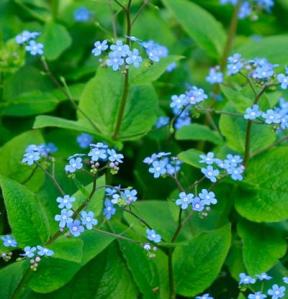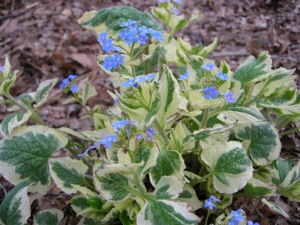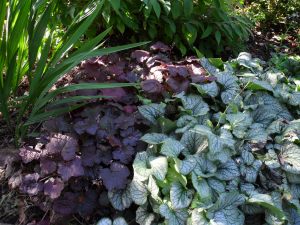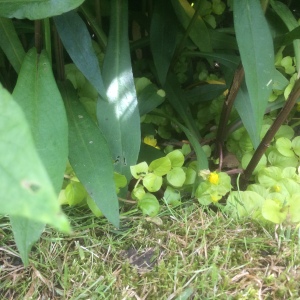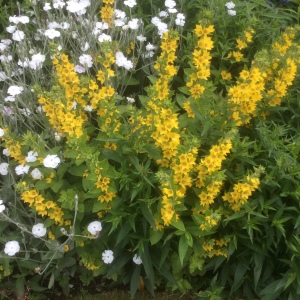I am a bit ambivalent about roses; I tend to think that in general I don’t care for them much, but then I remind myself of ones that have been favourites over the years, and there turns out to be quite a large number of them.
I can rule out hybrid teas, because I have never had a garden formal enough to accommodate them comfortably, and there are very few miniature or patio roses that I enjoy. So the roses I like are almost all either climbers or shrubs.
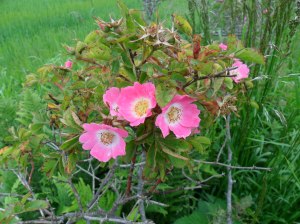
R. sherardii
i like wild roses. I miss R. sherardii, which grows very tidily in hedgerows in Scotland, but the seeds that I collected failed to germinate. Perhaps it’s better staying where it belongs though. Down here in Norfolk, the more scrambling R. canina dog rose is very welcome.
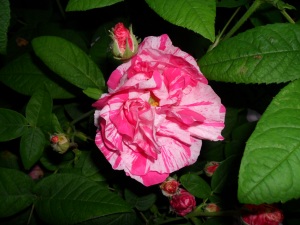
Rosa mundi or R. gallica ‘Versicolor’
R. mundi (one of the oldest roses with a remarkable history which deserves a post all to itself really) is a Gallica shrub rose which is best as a hedge I think, and then unsurpassed. I want to plant a row of them under the west wall of the house, which is a soft red brick.
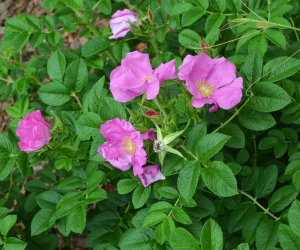
R. ‘Fru Dagmar Hastrup’
I can’t have R. ‘Roseraie de l’Hay’ with its overpowering scent – it’s too big for my new garden. I did love R. ‘Fru Dagmaf Hastrup’ in Scotland, and was delighted to find it here when I arrived, its soft pink flowers exactly matched by geraniums around it. A rose I do miss and would like to find room for here, is R. ‘Rhapsody in Blue’, which isn’t blue at all of course, but trying to be bluey mauve.
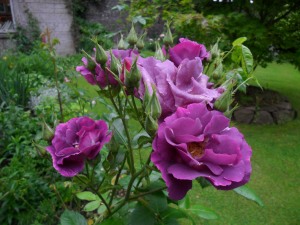
R. ‘Rhapsody in Blue’
There’s a climber called R. ‘Morning Jewel’ which is descended from ‘New Dawn’ which we had in Scotland, and it is a superb pure strong pink. I will have one here, but I shall have to wait for it. I asked Peter Beales about it; they don’t have it yet, but they are budding some this year, as another of their customers has asked for it. Meanwhile, I shall plant R. ‘Blairi No 2’ as a climber on my fence. It sounds rather modern but was introduced in 1845, and has a really strong scent.
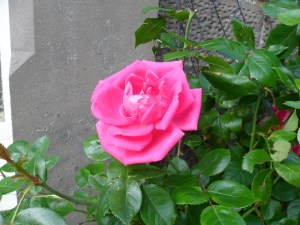
R. ‘Morning Jewel’
Because my garden is small, the space available for growing roses in is pretty limited, and in a couple of instances, I need to decide whether to plant roses in pots or to manage without. Not all roses are suitable
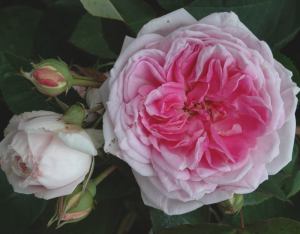
R. ‘Blairi No. 2
for growing in a pot, and obviously the most vigorous would resent being confined. Some roses can manage though, and I turn to Peter Beales Roses (who are virtually on my doorstep) for sensible advice. what they say on their website:
Planting roses in pots
As a rough guide, for smaller shrubs which grow up to 3ft, use pots with a 14 – 16 inch diameter. For larger ramblers and scramblers use pots with a depth of up to 20 – 22 inches.
As with planting roses into the ground the base of the stems should be just below the surface of the soil. If using a ready-made compost it would be wise to choose one that is soil based. Always add drainage to the bottom of the pot, shingle is fine, roses hate to have their feet in water. Leave enough distance from the edge of the pot to the compost to allow for watering without compost spillage, a couple of inches is advisable.
Every year when the rose is dormant, compost should be scraped away to a depth of a few inches and replaced. Then, after approximately three years the dormant rose should be removed and all the compost replaced.
Even so, I think for a rose the bigger the pot the better. My biggest plain earthenware pots are 14″ diameter, and about the same in depth, so big enough for the smallest of shrub roses, but nothing like adequate for larger ramblers and scramblers.
I have two roses in pots already, R. ‘Francis Dubreuil’ and R. ‘Félicité Perpétue’ They are coping alright so far, and both are coming into flower for their second time this year. The dark crimson R. ‘Francis Dubreuil’ is a bit disappointing actually, the flowers tending to droop and take on a rather wind-blasted appearance after only a few days.
A pot that is more than 20″ deep is a very big pot indeed in a small garden. The business of scraping away compost and replacing it each year, and then repotting the whole thing every three years is a big drawback, as is the ongoing need to keep the plant watered.
The RHS advice is slightly different: Only a few roses are tolerant of being grown in containers, as roses generally have long shallow roots for anchoring the plant and searching out moisture and nutrients. As long as deep containers are chosen, a good show of blooms should be achieved.
The best roses for growing in containers are the patio and miniature types, which can be grown in fairly small but deep pots 23-35cm (9-14in) deep. You could also try growing less vigorous, more compact ground cover and climbing roses, but use larger containers with a minimum depth of 30-45cm (12-18in).
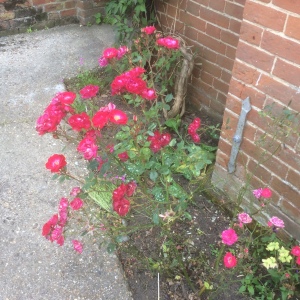 That makes sense to me, but I am not a small rose enthusiast. This is the only miniature or patio rose I have (I think miniature and patio are interchangeable), and I have no clue as to which it is. I wouldn’t have planted it myself, but it is there, and is quite sweet, so I look after it anyway.
That makes sense to me, but I am not a small rose enthusiast. This is the only miniature or patio rose I have (I think miniature and patio are interchangeable), and I have no clue as to which it is. I wouldn’t have planted it myself, but it is there, and is quite sweet, so I look after it anyway.
What most of my roses have in common is that they are more or less single, or open enough for the bees to get at them.
I’ve four more roses to plant this year, to cover arches, which are ‘Goldfinch’ with ‘Veilchenblau’ and ‘Albertine’ with ‘Guinee’. One way and another, that’s a fair few roses for a smallish garden, so I really should avoid growing any in pots and have them in the ground or nowhere.
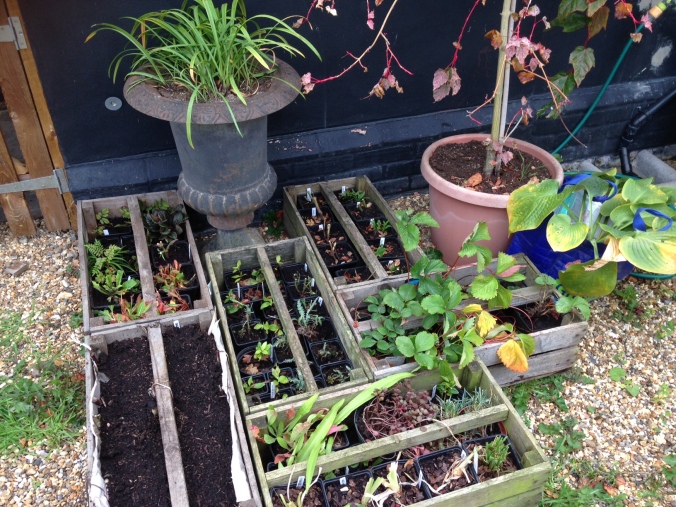

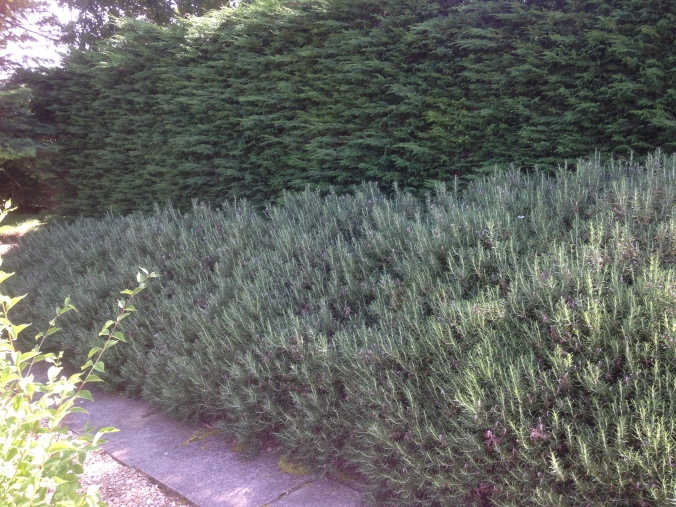
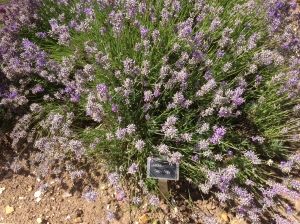
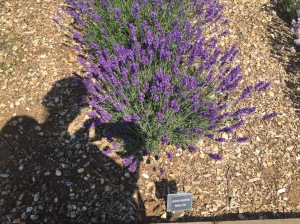
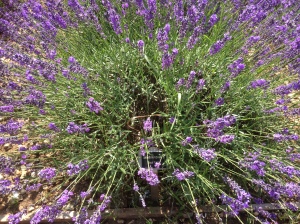
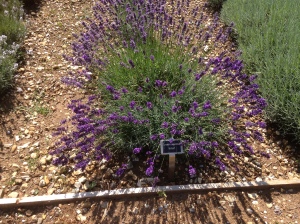
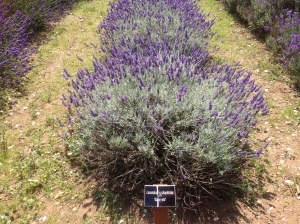
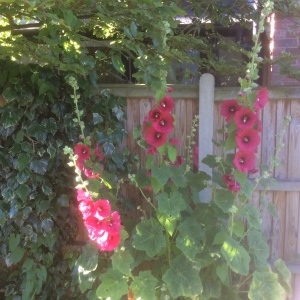 With hollyhocks, every year seems to be different. I have several, dotted about the garden, none of them put there by me, some of them behaving as perennials and apparently none of them much affected by rust.
With hollyhocks, every year seems to be different. I have several, dotted about the garden, none of them put there by me, some of them behaving as perennials and apparently none of them much affected by rust.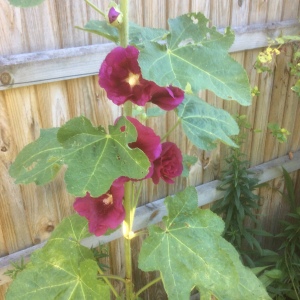 i have edited them somewhat, so that they now tend to be in groups rather than sacattered as individuals. As a result (I think as a result), the colours are more consistent and less random.
i have edited them somewhat, so that they now tend to be in groups rather than sacattered as individuals. As a result (I think as a result), the colours are more consistent and less random.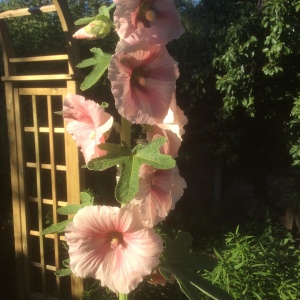 i have basically five colours: light mauve, red, cream, purple/black and pink. I have a few that I’ve grown from collected seed, but they won’t flower until next year, so I don’t know how they will turn out, in terms of colour.
i have basically five colours: light mauve, red, cream, purple/black and pink. I have a few that I’ve grown from collected seed, but they won’t flower until next year, so I don’t know how they will turn out, in terms of colour.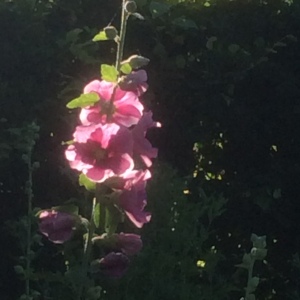 The most dramatic, the purple/black flowered ones, have not fared so well this year unfortunately, but there are a couple from which I will collect seed.
The most dramatic, the purple/black flowered ones, have not fared so well this year unfortunately, but there are a couple from which I will collect seed.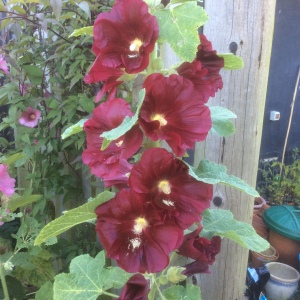 I shall be collecting seed from all these; I am fairly sure they will come true. There is one from which I have seed, with a pronounced branching habit, and it will use interesting to see if the branching habit is replicated too.
I shall be collecting seed from all these; I am fairly sure they will come true. There is one from which I have seed, with a pronounced branching habit, and it will use interesting to see if the branching habit is replicated too.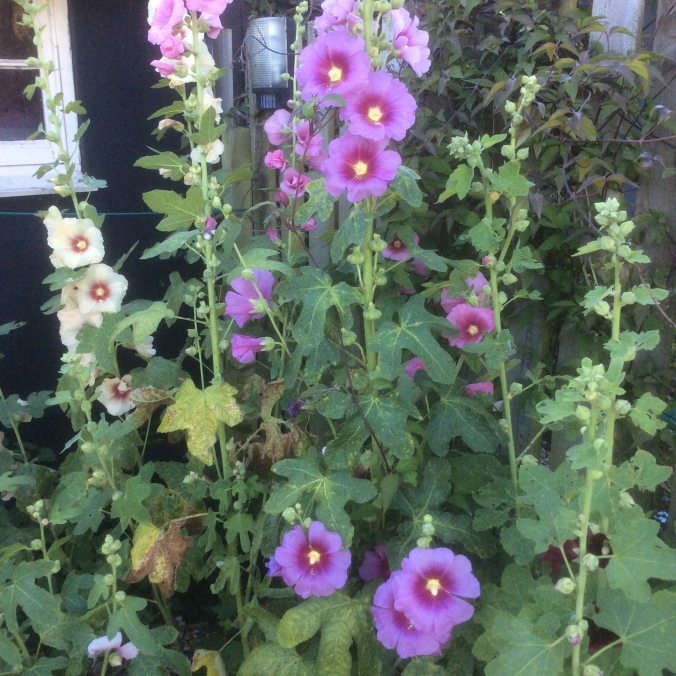
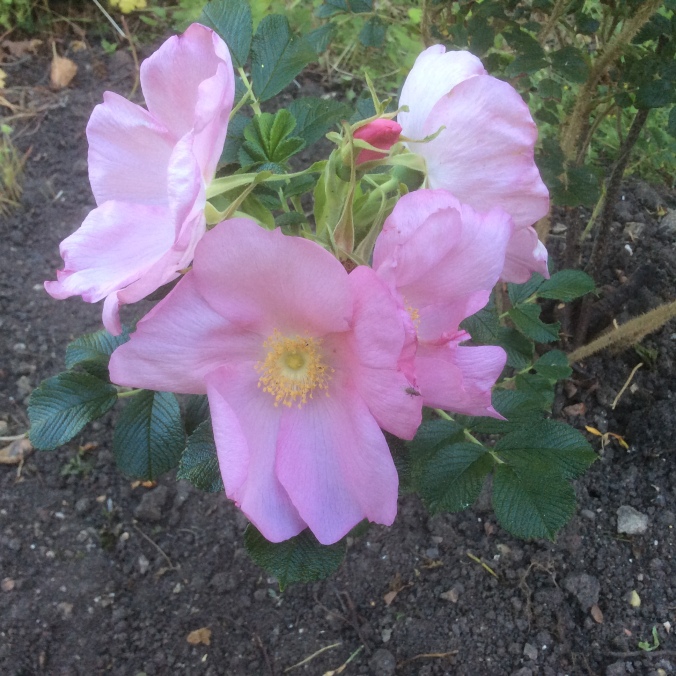 It has single flowers, starting rather late and flowering for ages, the delicate light pink silky single flowers replaced by colourful hips in the autumn. It seems to me very accommodating as to soils and conditions, although it is susceptible to all the rose pests and diseases going, and sadly, enjoyed by rabbits and deer, despite being quite prickly. Apart from those drawbacks, it is so nice to have a shrub rose that looks healthy all the time.
It has single flowers, starting rather late and flowering for ages, the delicate light pink silky single flowers replaced by colourful hips in the autumn. It seems to me very accommodating as to soils and conditions, although it is susceptible to all the rose pests and diseases going, and sadly, enjoyed by rabbits and deer, despite being quite prickly. Apart from those drawbacks, it is so nice to have a shrub rose that looks healthy all the time.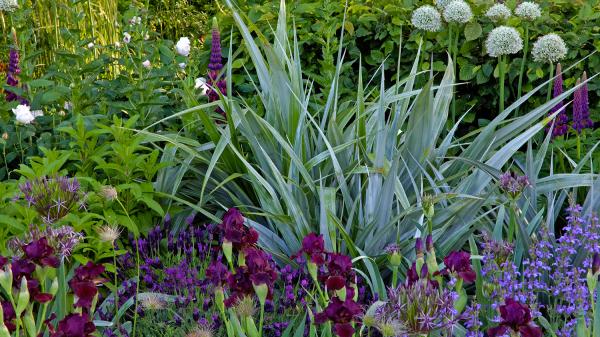






 That makes sense to me, but I am not a small rose enthusiast. This is the only miniature or patio rose I have (I think miniature and patio are interchangeable), and I have no clue as to which it is. I wouldn’t have planted it myself, but it is there, and is quite sweet, so I look after it anyway.
That makes sense to me, but I am not a small rose enthusiast. This is the only miniature or patio rose I have (I think miniature and patio are interchangeable), and I have no clue as to which it is. I wouldn’t have planted it myself, but it is there, and is quite sweet, so I look after it anyway.